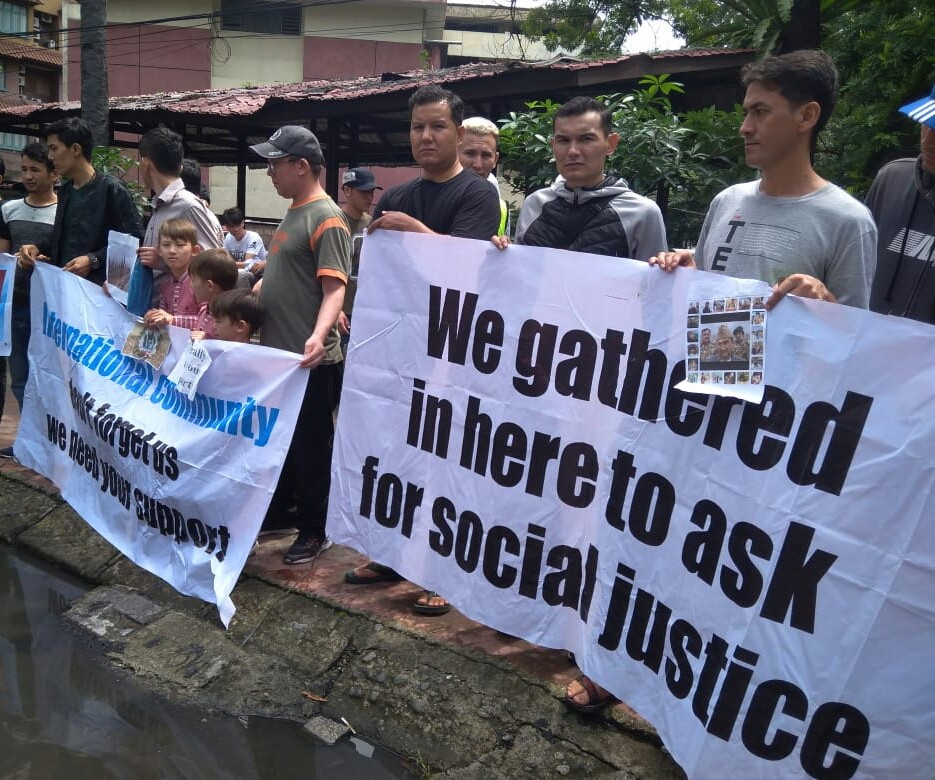International Refugees Protection in the Context of Human Rights
Main Article Content
Abstract
Refugees are defined as people who are due to a reasonable fear of persecution, caused by reasons of race, religion, nationality, membership in certain social groups and political parties, are outside their nationality, and do not want protection from the country. When refugees leave their home country or residence, they leave their lives, homes, possessions, and family. The refugees cannot be protected by their home country because they are forced to leave their country. Therefore, protection and assistance to them is the responsibility of the international community. In countries receiving refugees, they often experience inhumane treatment such as rape, assault, discrimination, repatriation by force, which lead to the violation of human rights. There has been regulation for human rights in refugee issues both internationally and regionally, for instance, the Convention related to Status of Refugee 1951 and The Protocol relating to the Status of Refugee 1967. There are at least five basic rights of refugees, they are the right to be protected from returning to the country of origin forcibly (non-refoulement), the right to seek asylum, the right to obtain equality and non-discrimination, the right to live, and to be secured, as well as the right to return home.
Article Details

This work is licensed under a Creative Commons Attribution-ShareAlike 4.0 International License.
All writings published in this journal are personal views of the authors and do not represent the views of this journal and the author's affiliated institutions. Author(s) are retain the copyrights of the Article. However, before publishing, it is required to obtain written confirmation from Author(s) in order to ensure the originality (Author Statement of Originality). The statement is to be signed by at least one of the authors who have obtained the assent of the co-author(s) where applicable.This work licensed under a Creative Commons Attribution-ShareAlike 4.0 International (CC BY-SA 4.0)
References
Badini, S. A. (2004). Perlindungan Hukum terhadap Pengungsi Berdasarkan Konvensi Jenewa 1951. Jakarta: Badan Pembinaan Hukum Nasional Departemen Hukum dan HAM RI.
Convention Relating to the Status of Refugees 1951 (Konvensi Pengungsi 1951)
Feller, E. (2001). The Evolution of the International Refugee Protection Regime. Washington University Journal of Law & Policy, 5(1), 129-139.
Fiske, L. (2020). Crisis and Opportunity: Women, Youth and Ethnic Minorities’ Citizenship Practices During Refugee Transit in Indonesia. International Journal of Politics, Culture, and Society, 33(4), 561-573.
Hamid, S. (2002). Lembaga Suaka dalam Hukum Internasional. Jakarta: PT. Raja Grafindo Persada.
Irsan, K. (2007). Pengungsi Internal dan Hukum Hak Asasi Manusia. Jakarta: Komisi HAM.
Lawand, K. (1996). The right to return of Palestinians in international law. International Journal of Refugee Law, 8(4), 532-568.
Parthiana, I. W. (2010). Refugee and Extradition: Could a Refugee be extradited?. Indonesian Journal of International Law, 7(4).
Prabandari, A., & Adiputera, Y. (2019). Alternative paths to refugee and asylum seeker protection in Malaysia and Indonesia. Asian and Pacific Migration Journal, 28(2), 132-154.
Romsan, A., et al. (2003). Pengantar Hukum Pengungsi Internasional. Bandung: Sanic Offset.
Sefriani, S. (2014). Hukum Internasional Suatu Pengantar. Jakarta: RajaGrafindo Persada.
Sujatmoko, A. (2011). “Hubungan antara Hukum Humaniter Internasional, Hukum Hak Asasi Manusia Internasional, dan Hukum Pengungsi Internasional”, PAPER, presented on Short Course International Humanitarian Law. Yogyakarta: ICRC.
Suwardi, S. S. (2004). Aspek Hukum Masalah Pengungsi Internasional. Indonesian Journal of International Law, 2(1).
Taylor, S., & Rafferty-Brown, B. (2011). Difficult journeys: Accessing refugee protection in Indonesia. Monash University Law Review, 36(3), 138-161.
The Fourth Geneva Convention Relative to The Protection of Civilian Persons in Time of War 1949.
UNHCR. (1967). United Nations Declaration of Territorial Asylum 1967.
UNHCR. (2001). Perlindungan Pengungsi, Buku Petunjuk Hukum Pengungsi Internasional. Jakarta: UNHCR.
United Nations. (1967). Protocol Relating to the Status of Refugees 1967.
Wagiman, W. (2012). Hukum Pengungsi Internasional. Jakarta: Sinar Grafika.
